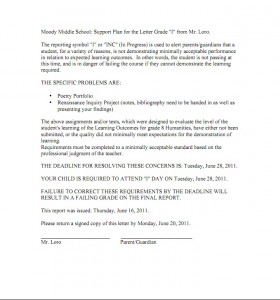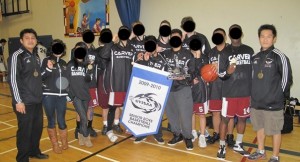
I believe that acting as a role model is a very rewarding experience. It is also a very difficult one as well because you have to constantly look yourself in the mirror and reflect on what kind of person you are and what kind of person you want to be. The artifact I chose for this standard is a picture of the high school team I’ve coached for three years. I have known most of the kids for two years and I got to know them really well that they still call me from time to time and ask me advice when it comes to school and coaching. I am very proud of the boys because before I started coaching them, they did not know how to set goals for themselves. The only goal they had for themselves was to win the championship but they did not have academic goals and life goals. Part of my coaching philosophy is to teach valuable life skills through basketball and the first lifeskill I taught was setting goals. The majority of goals that I made the players set were academic and life goals. Most of the players had one basketball related goal and that was to win. I believe that you are constantly being looked at and judged by the people closest to you. The people closest to me were the kids I worked with and that was my players. I made sure that I didn’t do anything that I wouldn’t want my players to do, that included swearing on the court, negative comments towards other players and referees and I made sure I respected everyone and showed respect where I see fit. As a teacher, we are the adult figure between 9-3 but we are a role model 24/7. Its important that we act the way we want our students to see us.
Tag Archives: audit
Standard #3: Final Practicum Report
The artifact that I chose for this standard is my final practicum report that was written by my school advisor. I am particularly proud of this document because it shows that during my practicum, I have become a more well-rounded individual and was able to meet the learning needs of my students. I made the conscious effort to incorporate different teaching and assessment methods so each student can learn the material to the best of their ability and with this comes the student’s growth as a learner. With the moderate number of students with IEP’s, I did my best to learn from them so I can improve my teaching style so I can meet their needs. Some students could learn through me talking to them and others required more visuals. I used a lot from my own learning experiences and implemented them to my teaching. I believe that building a rapport and making a connection with the students allows me to encourage the students and to let them know where they are academically. This connection allowed them to trust me so they are willing to take the advice I had given them to not only improve in the classroom but also improve themselves in life. That is where I find myself successful. In my ideal classroom, I will continue to do my best to create a positive learning environment where my students are encouraged to take risks and to ask questions that will enhance their critical thinking.
I was successful at reaching my goal at creating an environment that was warm and welcoming for my students that they were able to meet most of their academic goals. Furthermore, by building a strong rapport with my students, it gives me a better understanding of prior knowledge of the students’ understanding so I can build my lessons and units better which will lead me to become a more effective teacher.
Standard #5: Effective Teaching Practices
 Throughout my practicum I tried many different things to get my students engaged with the material and subject in hand. In my practicum, I used a lot of technology from youtube videos to prezi presentations. When they did their Inquiry Project presentations, a lot of them chose to do a prezi presentation or a video that they made. I tried a variety of teaching methods from teacher questioning to think, pair, share. The three artifacts I chose reflect the two units I taught during my practicum, the Late Middle Ages and Poetry.
Throughout my practicum I tried many different things to get my students engaged with the material and subject in hand. In my practicum, I used a lot of technology from youtube videos to prezi presentations. When they did their Inquiry Project presentations, a lot of them chose to do a prezi presentation or a video that they made. I tried a variety of teaching methods from teacher questioning to think, pair, share. The three artifacts I chose reflect the two units I taught during my practicum, the Late Middle Ages and Poetry.
I taught two units in Social Studies 8, the Late Middle Ages and The Renaissance. The artifact that I chose for this standard is the unit plan I did for the Late Middle Ages. This was the first unit plan I designed. I received a lot of help and support from my Faculty Advisor and School Advisor and the unit turned out great. For the most part of the unit, I followed the textbook when planning the lessons but I did my own way of teaching when it came to the lessons. I tried to implement student led activities through grouping the students together and coming up with the answers themselves. As a teacher I try to tie in similarities to today’s culture and give the students a perspective that by learning about our history, it can help us shape our future. One of things I did at the very first lesson of the unit was show how the conflict and revolution in Egypt was similar to the reformation of the church during the time just before the Renaissance. I made the effort to tie in current events to the themes I wanted them to learn during our unit and to the most part, the students got the idea. The second artifact is a picture of myself teaching a lesson about women’s roles during the Late Middle Ages. We discussed how women were treated in the late middle ages and I related it to how women were treated in Afghanistan. I showed a picture of a woman who was brutally beaten by her husband’s family because she tried to run away from him. The picture in the prezi presentation is of the woman with her nose cut off. When I showed this picture of the woman, there were some shocks and disgusted faces because of the nature of the picture but it created a lot of discussion of the roles of women in our society and in the society of the Middle Ages.

The third and final artifact I chose is a lesson plan from my poetry unit. I chose this particular unit because its about Love and Poetry. The majority of songs are about love and my students listen to a lot of music about love. Some of them can relate and some of them cannot. One of the tasks they did was to write a love poem about a body part they hate. One person wrote a great poem about his skinniness and how even though he hates being skinny, he still loves the way he looks. Some of the girls in the class even suggested to me certain musical artists to bring in for next class because they relate to them better and I found it true. During this unit, the way I assessed and evaluated them was through a Poetry Portfolio which is a culmination of all their poetry that they wrote during the unit. I also had the students write reflections on songs that they chose because I wanted to see what kinds of songs they listen to as well as see if they understand they lyrics to the songs they are listening to.
Throughout the practicum, planning units and lessons were a lot of hard work but when going out there and teaching the lesson and having the students understand the learning outcomes is very rewarding. The instructional methods and evaluations are still things I need to work on but I believe that will come with time and practice.
Standard #8: Rugby
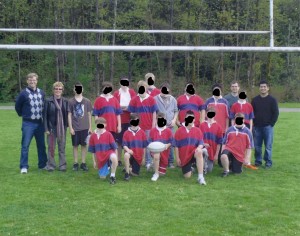
The artifact that I have chosen for this standard is a picture of the boys rugby team that I helped coach. As a new teacher (or teacher candidate) I feel that it is necessary to become involved in the various areas of the school environment in order to learn as much as you can about the school culture and the makeup for the school community. I’ve coached basketball in the past and I gladly brought my experience to the rugby field and it helped. The rugby field is not a traditional classroom but I felt that I was able to contribute to the profession by helping contribute to the community of coaches in the school through my involvement with the team. I also felt that school spirit is an integral part of the school environment and community and without it the feel of the school would not be the same. I felt that by being involved with the rugby team, I created a positive school environment for both the students and the teachers by being involved in extra-curricular activities. Even though I’ve been around coaching for a while, I have a lot to learn. In the past, I’ve been able to take the skills I learned in classroom management and put them in a team environment. I was able to take the improvization in coaching a game to the classroom when adapting a lesson to meet the needs of my students. I hope to continue to learn from coaching and contribute that knowledge to the classroom because I believe coaching and teaching go hand in hand.
Standard #1: Value and Care for All Children
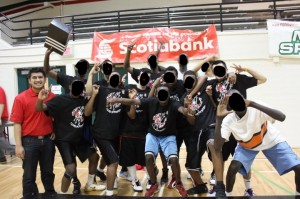 The artifact I chose for this standard is a picture of my community team after going undefeated the whole season and winning the league championships. I’m very passionate about the organization, Night Hoops, that I’m involved in because it allows kids to get off the streets and learn valuable life lessons using the sport of basketball. The particular bunch that is in the photo are really special. They have come from all walks of life and has taught me a lot about their culture and their history. I work in the Burnaby-Edmonds area where there is a high population of African immigrants. The majority are Sudanese refugees, Somalian refugees, and Ethiopian immigrants. Their neighbourhood doesn’t help in creating positive influences as well. The majority of them live in project housing and there are a lot of negative activity that comes around at night. The one thing that binds all the kids together is basketball. They will be together at the local rec centre and will be playing basketball for 2-3 hours straight before resting. Where I come in is providing leadership and guidance. Through Night Hoops, I was able to coach a young man with a lot of basketball talent but no direction in terms of his future. I talked to him every time I saw him about what’s going on in school and what goals he has set for himself. Now he’s taking school more seriously and even considering colleges he want to attend. He’s also been receiving basketball scholarships for universities in the U.S. but has said he will make his decision on what is the best fit academically and for his family. He has grown so much since I’ve met him, not only physically but also as a person.
The artifact I chose for this standard is a picture of my community team after going undefeated the whole season and winning the league championships. I’m very passionate about the organization, Night Hoops, that I’m involved in because it allows kids to get off the streets and learn valuable life lessons using the sport of basketball. The particular bunch that is in the photo are really special. They have come from all walks of life and has taught me a lot about their culture and their history. I work in the Burnaby-Edmonds area where there is a high population of African immigrants. The majority are Sudanese refugees, Somalian refugees, and Ethiopian immigrants. Their neighbourhood doesn’t help in creating positive influences as well. The majority of them live in project housing and there are a lot of negative activity that comes around at night. The one thing that binds all the kids together is basketball. They will be together at the local rec centre and will be playing basketball for 2-3 hours straight before resting. Where I come in is providing leadership and guidance. Through Night Hoops, I was able to coach a young man with a lot of basketball talent but no direction in terms of his future. I talked to him every time I saw him about what’s going on in school and what goals he has set for himself. Now he’s taking school more seriously and even considering colleges he want to attend. He’s also been receiving basketball scholarships for universities in the U.S. but has said he will make his decision on what is the best fit academically and for his family. He has grown so much since I’ve met him, not only physically but also as a person.
Standard #7: They Call Me Coach
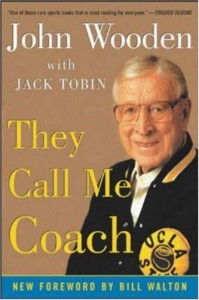 The artifact I chose for this standard is a book I’ve been reading called “They Call Me Coach” by John Wooden. I read this book as I was going through my practicum and I found that it really helped me a lot when I was developing my own teaching philosophy. John Wooden was known as the greatest coach to ever lived. Not only did he win championships, he also provided wisdom on how to approach life and how to become successful at it. One of the quotes from the book that really stuck out for me is his definition of Success: “Success is peace of mind which is a direct result of Self-satisfaction in knowing you did your best to become the best you are capable of becoming.” I really took this to heart and I shared this with my students during my practicum. Success is not how much money you make or how many ‘A’s you got on your report card but it is knowing that you did your best to become the best you are capable of becoming. When I shared that with my students, it really opened their eyes especially when moving on to high school. I saw their eyes light up and wanting to be this definition of success. An example of this was when I first entered my long practicum, I had my students set goals for themselves that will be done by the end of the year. One student told me his goals for humanities and that was getting a ‘B’ on his 3rd term report card. He worked extremely hard throughout the term and when he earned that ‘B’, I had to tell him before receiving his report card that he will be receiving that ‘B’. I found that successful because as a teacher, I achieved my goal as helping my students find success in themselves.
The artifact I chose for this standard is a book I’ve been reading called “They Call Me Coach” by John Wooden. I read this book as I was going through my practicum and I found that it really helped me a lot when I was developing my own teaching philosophy. John Wooden was known as the greatest coach to ever lived. Not only did he win championships, he also provided wisdom on how to approach life and how to become successful at it. One of the quotes from the book that really stuck out for me is his definition of Success: “Success is peace of mind which is a direct result of Self-satisfaction in knowing you did your best to become the best you are capable of becoming.” I really took this to heart and I shared this with my students during my practicum. Success is not how much money you make or how many ‘A’s you got on your report card but it is knowing that you did your best to become the best you are capable of becoming. When I shared that with my students, it really opened their eyes especially when moving on to high school. I saw their eyes light up and wanting to be this definition of success. An example of this was when I first entered my long practicum, I had my students set goals for themselves that will be done by the end of the year. One student told me his goals for humanities and that was getting a ‘B’ on his 3rd term report card. He worked extremely hard throughout the term and when he earned that ‘B’, I had to tell him before receiving his report card that he will be receiving that ‘B’. I found that successful because as a teacher, I achieved my goal as helping my students find success in themselves.
I chose this artifact for this standard because it learning about other people’s philosophy in not only teaching but in life can help in creating my own philosophy in my teaching and make me become a better teacher. I believe that I will continue to change my philosophy as I continue my career but by reading books and experiencing life, it is a commitment to learning that is what I strive.
Standard #6: My Subject Areas (Physical Education and Poetry)
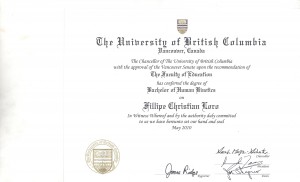 The first artifact that I chose is a picture of my Human Kinetics degree that I received in May 2010 from UBC. I chose this artifact because it shows the reward of hard work and determination. To me, its not just a very expensive piece of paper with writing on it but its also a reminder of the education I received through the years I went through which will allow me to retrieve when I need it as well as a constant reminder of my passion for Physical Education, sports, and active living. I use the education I received from my undergrad every time I’m coaching because of the many strategies I’ve learned from teaching specific skills to behaviour management techniques. A question that I would like to pursue in my career as an educator is how to combine physical education and other subjects in the classroom. I want to combine my love for physical activity and use that to teach kids other subjects like math and social studies.
The first artifact that I chose is a picture of my Human Kinetics degree that I received in May 2010 from UBC. I chose this artifact because it shows the reward of hard work and determination. To me, its not just a very expensive piece of paper with writing on it but its also a reminder of the education I received through the years I went through which will allow me to retrieve when I need it as well as a constant reminder of my passion for Physical Education, sports, and active living. I use the education I received from my undergrad every time I’m coaching because of the many strategies I’ve learned from teaching specific skills to behaviour management techniques. A question that I would like to pursue in my career as an educator is how to combine physical education and other subjects in the classroom. I want to combine my love for physical activity and use that to teach kids other subjects like math and social studies.
 The second artifact for this standard is a picture of one of my lesson plans from my poetry unit I did during my practicum. In school, I never liked poetry and English class because I never had an interest in it. I found it extremely boring to read a book and analyze it and find out what it meant. I just never had an interest in it. When it came to the poetry unit, I found it a lot easier to endure because poetry is short and so I wouldn’t have to read pages and pages of work. Just before my practicum I started listening to spoken word poetry and got really interested in it so when my school advisor gave me the choice of either doing a novel study or a poetry unit, I instantly chose poetry because of this sudden interest. I decided to focus on spoken word poetry and music because musical lyrics that we hear on the radio is a form of poetry that everyone listens to. I took more of a free form instead of the typical haikus and sonnets because I wanted my students to focus of writing words and thoughts down on paper instead of focusing on the form of the poem. I chose this artifact as an example of a new interest I learned to love and wanting to share with my students so they can enjoy it as well. One thing that I will want to change from this lesson is to get more student input on the unit especially when it comes to the music portion.
The second artifact for this standard is a picture of one of my lesson plans from my poetry unit I did during my practicum. In school, I never liked poetry and English class because I never had an interest in it. I found it extremely boring to read a book and analyze it and find out what it meant. I just never had an interest in it. When it came to the poetry unit, I found it a lot easier to endure because poetry is short and so I wouldn’t have to read pages and pages of work. Just before my practicum I started listening to spoken word poetry and got really interested in it so when my school advisor gave me the choice of either doing a novel study or a poetry unit, I instantly chose poetry because of this sudden interest. I decided to focus on spoken word poetry and music because musical lyrics that we hear on the radio is a form of poetry that everyone listens to. I took more of a free form instead of the typical haikus and sonnets because I wanted my students to focus of writing words and thoughts down on paper instead of focusing on the form of the poem. I chose this artifact as an example of a new interest I learned to love and wanting to share with my students so they can enjoy it as well. One thing that I will want to change from this lesson is to get more student input on the unit especially when it comes to the music portion.
Standard #4: “I” Form
The artifact that I have chosen for this standard is a copy of an “I” (Incomplete) Form that I sent home to one of my students. When a student receives this form, it basically tells the student and his or her parents that the student has minimally met the standards that were set at the beginning of the term in the subject that this form is from, in this case Humanities. The student is required to send the form home, get their parent or guardian to read it and sign it. The student will be expected to come in on “I” day and complete the work so they can get the minimum mark given which is a pass. The form gives the student and parents an idea about the below satisfactory work habits that the student is portraying in the classroom.
Asking students to come in for I-day is usually a last resort when trying to get work in on time. For this particular student, I’ve repeatedly asked this student to hand in the assignment that was asked and every time he said he will get the assignment in, he said he will hand it in. When I gave the I-form to the student, he looked like he was expecting the form and understood what will happen if he does not come in. The next day he returned the form signed by his mom showing me that he is prepared to spend the day there until its finished. Having the form signed from his mom showed me that the parents understood the consequences of not coming in on I-day and finishing the work. It is expected that if the student does not come in on I-day, the student will fail the class.
I feel that parent involvement is necessary for the success of the student. Having parents knowing what is going on in the classroom and knowing the progress of their child shows me that they are concerned about their child’s learning.
